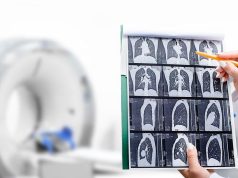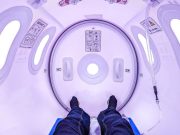Exposure to Preconception CT Linked to Spontaneous Pregnancy Loss
Higher risks for spontaneous pregnancy loss and congenital anomalies seen in association with exposure to preconception CT
Insomnia Linked to Cognitive Decline, Cognitive Impairment
Insomnia linked to faster decline in global cognition scores and increased risk for cognitive impairment in older adults
Emphysema on Low-Dose CT Screening Predictive of Mortality Up to 25 Years
Emphysema independently predictive of all-cause mortality, COPD mortality, and CVD mortality
2022 No Surprises Act Reduced Patient Out-of-Pocket Spending
Declines seen of nearly $600 annually per patient
Moderate-to-Severe TBI Linked to Malignant Brain Tumor Risk
Moderate-to-severe traumatic brain injury group had significantly higher risk for developing malignant brain tumors versus mild TBI group
Use of AI Can Help Identify Coronary Thin-Cap Fibroatheromas
Significant association seen for AI-TCFA with primary outcome of composite of any-cause death, nonfatal MI, unplanned revascularization at two years
MRI Radiomics Plus Biomarker Model Can Predict Knee OA Progression
Model using longitudinal MRI radiomics, biochemical biomarkers, clinical factors improves prediction of progression
FDA Urges Safe Use of Hyperbaric Oxygen Therapy Devices
Agency is reminding health care providers to carefully follow the manufacturer's instructions
AI Mammography Interpretation Model With Uncertainty Quantifications Can Reduce Radiologist Workload
With the best-performing uncertainty metric, 61.9 percent of examinations were read by radiologists in a recent study
Genicular Artery Embolization Safe, Relieves Pain for Symptomatic Knee OA
Significant decrease seen in serum levels of vascular endothelial growth factor and interleukin-1 receptor antagonist at 12 months



















